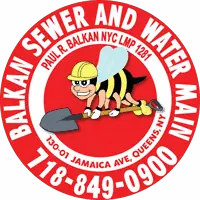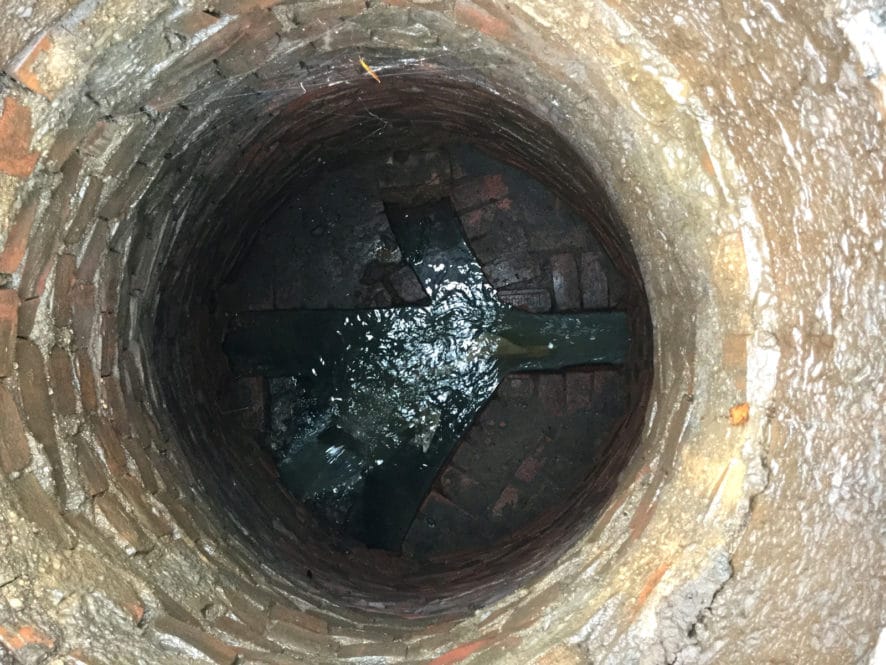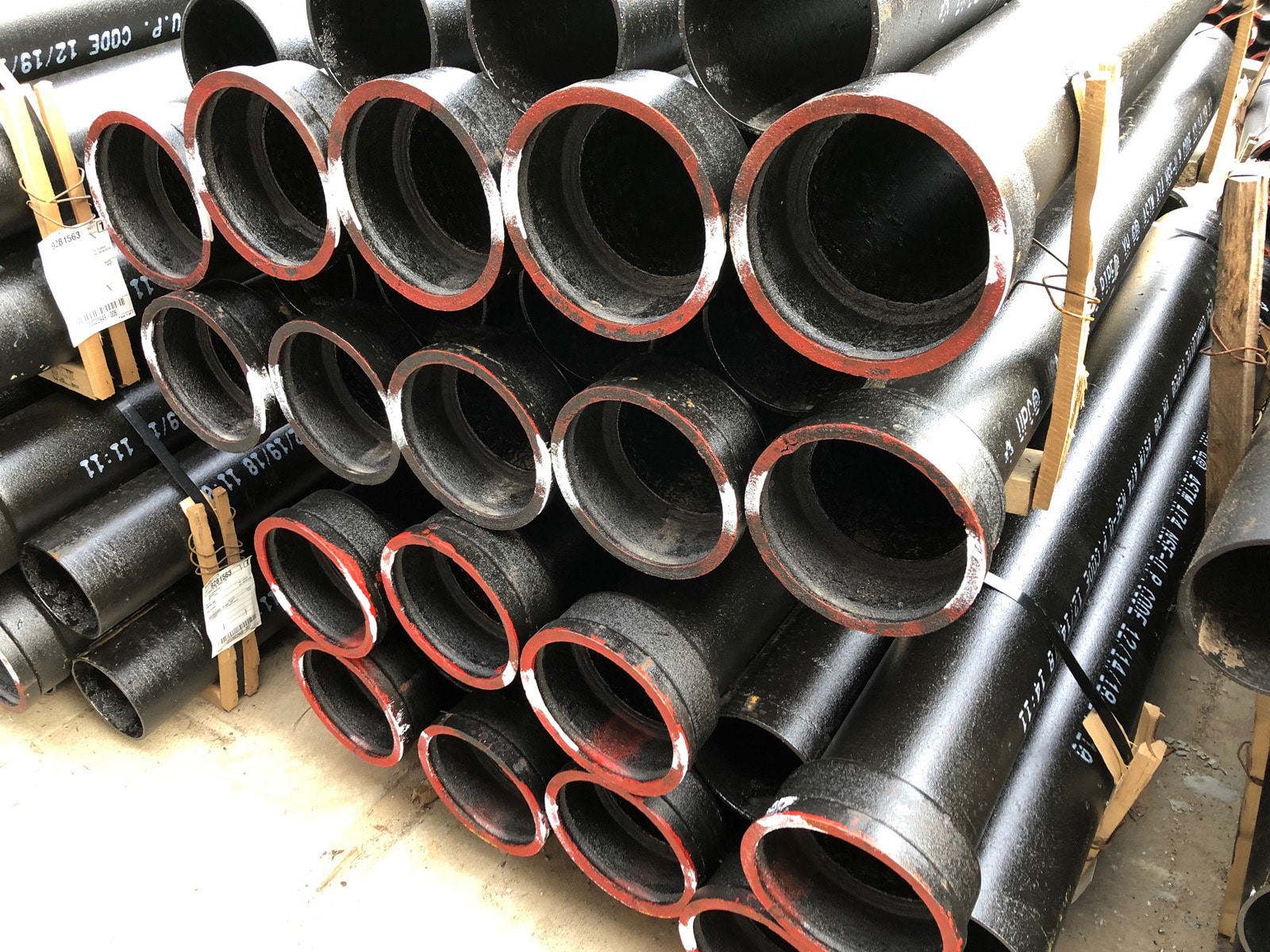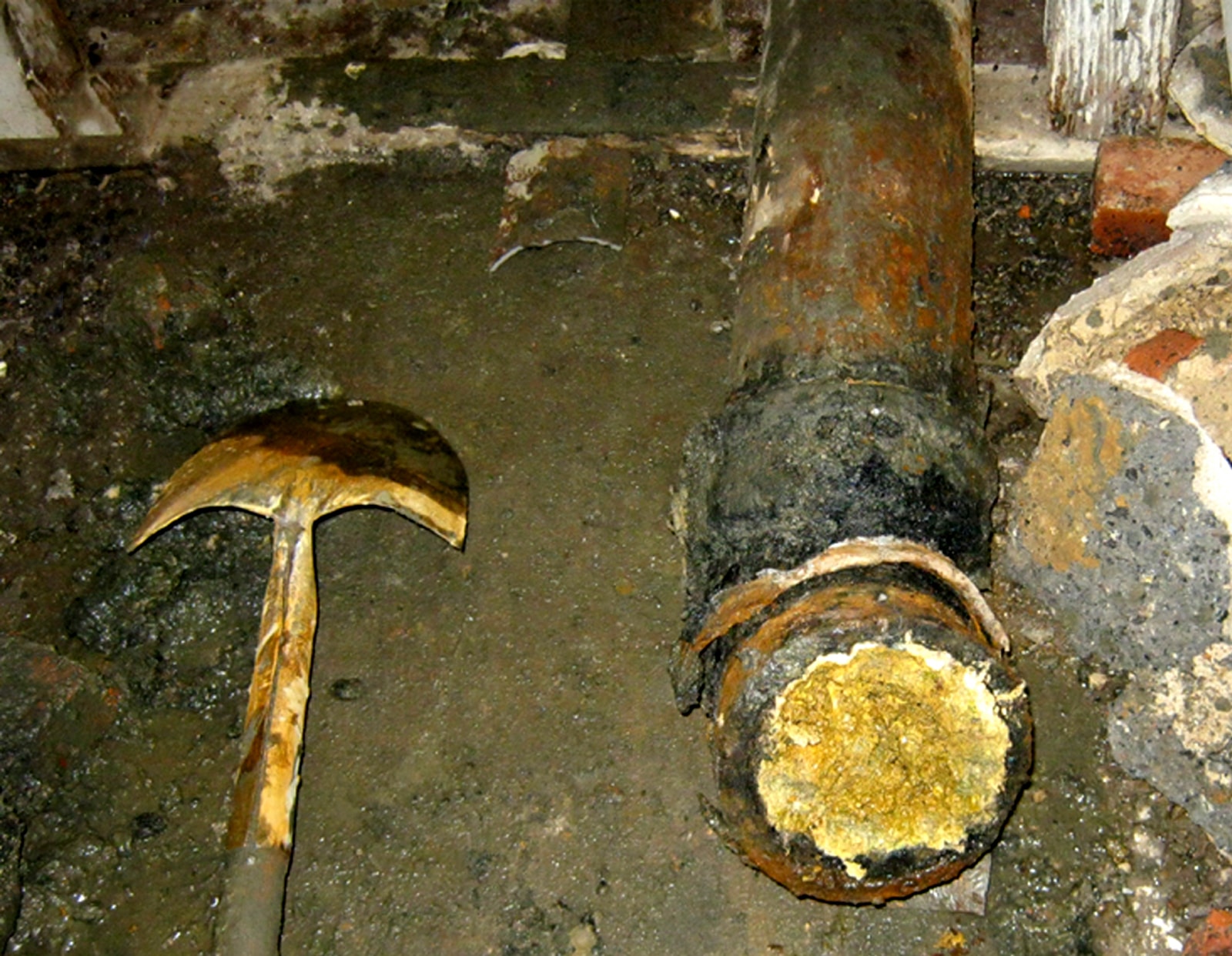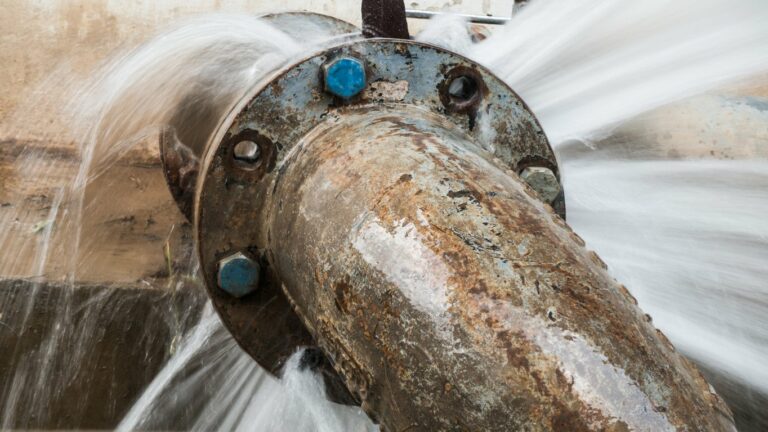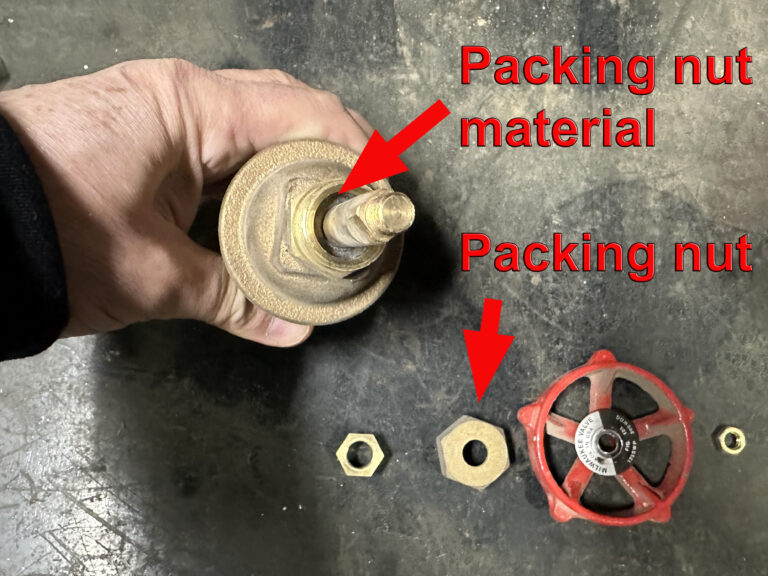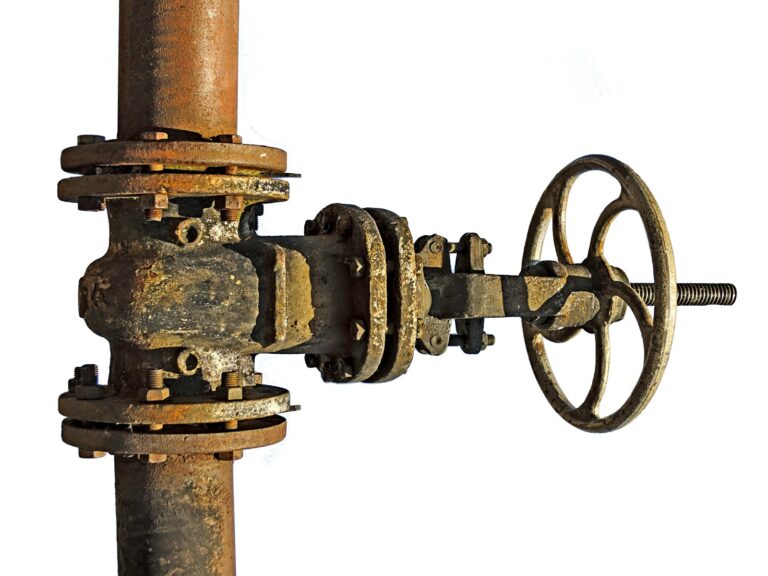It is our intent for this article to provide a complete A to Z explanation of a house sewer line for property owners to utilize and also learn the type of sewer line in your house. Chances are, if you happened upon this article, you’re having some sort of drain issue. If that’s the case, then you’ve come to the right place to learn about the main sewer line in your home. The information you seek will be included somewhere below in easy-to-understand videos and written point-by-point explanations.
Types of House Sewer Lines
House sewer lines have only two types of different destinations aka points of connection. The vast majority of homes in towns, cities, and developed areas are connected to a public sewer system. In obscure areas, out-of-the-way places, or relatively inaccessible lots, septic systems may still be utilized. If you’ve ever wondered how to find the main sewer in your home, go to the front of your basement and look for the house sewer trap or main cleanout.
A septic system is essentially a private wastewater treatment system. It is one in which there is one owner, and all the cost of maintaining the system is absorbed by that one owner. This is as opposed to many hundreds, if not thousands of properties being connected to a public sewer system.
Types of water the 3 types of House Sewer Lines are designed to carry
If you are a property owner, you may think all types of sewers are alike. However, the actual type of house sewer lines fall into three categories. These 3 categories and a brief description follow below. Additionally, you can learn about all the different types of house sewer line connections by reading: Different Types of House Sewer Line Connections. This information will allow you to make better hiring decisions, and potentially avoid costly mistakes if you’re working on your home sewer line.
1. Combined house sewer line
A combined house sewer line collects and combines the flow from both wastewater and stormwater into one combined line. While once very prevalent, they cause stress on public wastewater treatment plants by also accepting rainwater. Since both flows are combined into one line, all the water must be treated. NYC, as an example, has added many dedicated public storm sewers to its system over recent years.
2. Sanitary house sewer line
A sanitary sewer, as its name implies, solely takes the flow of sanitary water. That is water used inside your home from toilets, sinks, showers, etc. All of this water gets treated by a public sewer treatment plant, or by a private septic system.
3. Storm sewer line
A storm sewer line is dedicated to taking in rainwater of all sorts. That includes anything from your area drain or rooftop to a publicly-owned catch basin in the roadway. Somewhere in the stormwater system there may be holding tanks or detention tanks. These tanks are designed to hold rainwater for some time during excessive rainfall, or snow melts.
Detention tanks like these prevent a sewer system, or piping system from getting overburdened and surcharging. When a public sewer surcharge vast amounts of water can run back into your home, causing a vast amount of damage.
In other cases, dry wells may be a part of a stormwater system. Dry wells allow stormwater to seep into the ground surrounding the dry wells themselves. Dry wells only have pipes allowing water to enter, but they do not have exit pipes.
How do you determine how large to make a dry well?
Careful soil testing has to be done by a professional to know the required size and depth requirements before any dry well is installed. Failure to do proper soil testing may result in a dry well that does not function properly. Dry wells are not connected to the house sewer itself.
Typical Sizes for a Home Sewer
Most residential home sewers are 4″ inside your home itself, and up to the end of your property line as well. It is typical in many areas, such as NYC, that the size of the pipe itself increases to 6” as it exits your property line.
When multi-family buildings are involved, the size can increase to 8″ or even 10″. Likewise, when large amounts of rainwater must be accounted for, a home sewer line can be 8″, 10″, or in rare instances 12″ diameter pipe.
Materials Approved and Used for House Sewer Lines
Many residential buildings all across the country use PVC at this time for their house drains and sewers. A house drain is the horizontal main drain under your basement floor. In some areas, the home sewer line itself is also PVC, or a different variety of plastic tubing.
Important to note, that in NYC the house sewer line itself must still be extra heavy cast iron pipe. In some cases where unstable ground conditions exist or extreme vibration, a Ductile Iron Pipe is required. An example of where extreme vibration exists would be underneath an elevated train line.
Orangeburg piping
In certain areas of the country, which included the Bronx, Orangeburg pipe was used for some time. As it seems to have never been approved as a house sewer material in NYC, its use remains a bit of a mystery. Orangeburg pipe is made from wood pulp, and pitch (hot tar). It was never meant to be used to convey waste water, or any water for that matter. It was intended to be used as a transit, a pipe through which cables or other lines could be run.
If you are one of the unfortunate property owners who have an Orangeburg house sewer, you undoubtedly have recurring problems. Once Orangeburg comes into contact with water, it softens and deteriorates. Furthermore, it tends to crush down under the weight of the ground above it. Orangeburg pipe it perhaps the worst material to ever have been used for a house sewer line.
Proper installation of a House Sewer Line
There are two basic rules to a successful house sewer line installation. The 1st rule is to install the entire line with a minimum of 1/4″ of pitch per foot of run. If even one section of pipe is back-pitched, grease and clogs will result. The beauty of your home sewer system is that it runs by gravity. As long as that is understood, and respected, your house drain system will run trouble-free for decades.
The 2nd rule is to avoid sharp turns in your drain system lines. When necessary 1/8 bends and 1/6 bends can be used. These are the equivalent of 22 1/2 degree (1/16 bend), and 45 degree (1/8 bend) bends. This applies to drain pipes that are above ground as well, like those in your home.
Even a 90 degree bend, unless it is facing directly downward, will cause clogs and stoppages. If you must have a 90 degree turn, it is advised to use two lesser bends with a short piece of pipe between the two fittings. This will alleviate an abrupt turn in the flow of wastewater.
Change in direction and sewer clean-outs
In some rare cases, such as when a home sewer goes around a structure or obstacle, a 90 degree bend must be used. In the trade this fitting is referred to as a “long sweep”; never use a 1/4 bend (90 degree short bend). Any time there is an extreme change in direction (such as a 90 degree bend) a clean-out should be installed.
If a clog occurs, a clean-out allows a drain cleaner easy access, and a better chance to clear the clog. Clean-outs are also a good idea on long runs of pipe. A rule of thumb is to install a clean-out for every 50′ of run or so.
Local Codes vary and must be Followed
Important to note is that local codes vary by city, county, town, and even village. For instance, there are well over 60 villages in Nassau County alone. The last thing you would want is to go to great expense, and have an illegal house sewer installed. This is yet another reason to hire locally licensed and insured sewer contractors.
Interestingly, what is allowed in one jurisdiction, is most definitely not allowed in another. For instance, while plastic piping is the norm in Nassau County, it is not permitted inside NYC for a house sewer line.
Inspection Requirements vary by Locality
Just as local codes vary, so do sewer inspection requirements. In some areas, an inspection of certain sewer work may not even be required. Even your responsibility as a property owner varies by jurisdiction. In many areas, such as NYC you are responsible for the entire length of run of your house sewer, including up to the connecting point. Yet in other areas, you may be limited to up to the curb line, or your property boundary. If you live outside of the NYC area, check with your local authority.
In NYC all house sewer work is governed by the DEP House Inspection Unit. All work that requires a permit requires an on-site inspection and a written sign-off. DEP inspections must be arranged by a Licensed Master Plumber at least one day ahead of time. In NYC the DEP inspector also acts to ensure a safe job site, proper materials, and of course proper pitch of pipe.
Required Licensing is Usually Mandatory
Required licensing may vary by municipality. However, it is generally accepted that house sewer work must be performed by a Licensed Master Plumber. This is most definitely the case in NYC. Furthermore, being a sewer contractor is a niche specialty within the NYC Licensed Plumbing community. It requires a unique skill set, specialty equipment, a different scope of insurance, and a DOT bond.
In the entire city of New York, there is only a relatively small group of contractors who specialize in this type of work. License status can be verified via the NYC Department of Buildings website. Likewise, insurance status can also be verified on this website.
4 Typical Home Sewer Line Problems
Sewer problems can vary case by case. However, there are essentially 4 categories of sewer problems you may have. If you wish to read a more detailed explanation, read The Most Common House Sewer Problems. Take note, that today’s modern HD sewer cameras and detection equipment can take the guesswork out of deciding how to handle your drain line issue. Modern sewer tools give a clear HD image of your problem, the exact location, and the depth of the pipe as well. This great information now makes a “spot sewer repair” much more feasible than it was in the recent past.
1. Root infiltration
If roots enter your drain system, address it immediately. Once your sewer is not running off, cleaning it out is much more difficult. Careful diagnosis is needed before doing any excavation work. You have to decide between an extensive water jet, a spot repair, or a complete sewer replacement. Root treatments are also available, best applied by a professional.
Always carefully consider where you plant your trees and shrubs. Also carefully consider the type of trees you plant. Trees with a shallow root structure are far less likely to damage your house sewer.
2. Broken, dislodged, or crushed pipe
This is another case where careful diagnosis is needed. It is advisable to find out if only a small area of your house sewer line is broken or cracked, such as at the connection. Or, if your entire run of pipe has exhausted its useful life as a functional drain system.
In some cases, an “event” may have caused the damage, such as a fallen tree. In other cases, roots, for instance, the integrity of your entire house sewer can have been compromised. This is when you have to expect a professional sewer contractor to logically explain your situation and your options.
The more questions you prepare and ask, the more comfortable you’ll be with your hiring decision. Sewer excavation work always costs a few thousand dollars, and rarely do you have to rush to a hiring decision. Whatever you decide to do, you’ll be living with it for years to come.
3. Fat, Oil, or Grease (FOG) Stoppages
Fat, oil, and grease (FOG) are your sewer line’s enemy. Do not abuse your drain system. Dispose of fat, oil, and grease into a container, not your drain lines. Once you have a grease clog in a main sewer line, typically only a water jet will clear it out. If you get recurring grease stoppages, you may have a back-pitched pipe; read below about back-pitched pipes.
4. Back-pitched sewer pipe
Although a seemingly simple principle, is that drain pipes work on gravity, many are not installed that way. When a sewer line is installed without proper pitch, it is considered a back-pitched pipe. While some pipes can settle over time, and become back-pitched, that is typically not the case.
If even a small section of your house sewer is without pitch, also known as slope, it will cause you problems. Symptoms of a back-pitch are recurring grease or debris clogs in the same area of your run of pipe. You clean them out with an auger, or sewer jet, and they return at a later date. These are tricky sewer problems.
In some cases a spot repair can solve them, but not typical. More typical is that a great portion of the run of pipe has to be changed to achieve pitch. In extreme cases, the house drain inside your home has to be raised to have a proper pitch to the public sewer connection. If you suffer from a lack of pitch or slope on your sewer pipe, it is best to get a full range of quotes for all possibilities. If you end up requiring more extensive work than planned, know the price ahead of time.
Who do you trust for your House Sewer Line work?
Regardless of where you live, sewer work requires great skill, and specialty tools, and poses safety issues as well. In short, regardless of where you live, trust a licensed and insured sewer contractor to find your sewer, than repair it properly. If you happen to live in NYC, or on Long Island, Balkan should be your first choice.
The Balkan Team has over 70 years of experience, overseen by the same founding family. Contact the Balkan Team for expert advice, a free on-site visit, and prompt service 7 days a week – Balkan is The Team You Trust.
